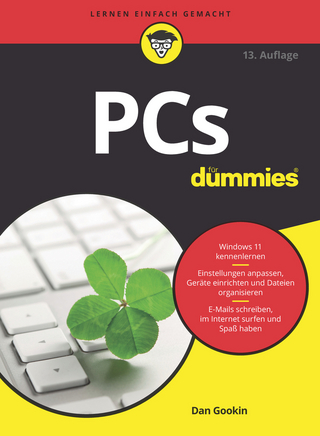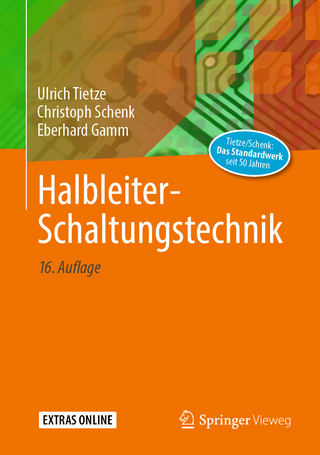
Getting Started with Python for the Internet of Things
Packt Publishing Limited (Verlag)
978-1-83855-579-5 (ISBN)
Build clever, collaborative, and powerful automation systems with the Raspberry Pi and Python.
Key Features
Create your own Pi-Rover or Pi-Hexipod robots
Develop practical applications in Python using Raspberry Pi
Build your own Jarvis, a highly advanced computerized AI
Book Description
This Learning Path takes you on a journey in the world of robotics and teaches you all that you can achieve with Raspberry Pi and Python.
It teaches you to harness the power of Python with the Raspberry Pi 3 and the Raspberry Pi zero to build superlative automation systems that can transform your business. You will learn to create text classifiers, predict sentiment in words, and develop applications with the Tkinter library. Things will get more interesting when you build a human face detection and recognition system and a home automation system in Python, where different appliances are controlled using the Raspberry Pi. With such diverse robotics projects, you'll grasp the basics of robotics and its functions, and understand the integration of robotics with the IoT environment.
By the end of this Learning Path, you will have covered everything from configuring a robotic controller, to creating a self-driven robotic vehicle using Python.
Raspberry Pi 3 Cookbook for Python Programmers - Third Edition by Tim Cox, Dr. Steven Lawrence Fernandes
Python Programming with Raspberry Pi by Sai Yamanoor, Srihari Yamanoor
Python Robotics Projects by Prof. Diwakar Vaish
What you will learn
Build text classifiers and predict sentiment in words with the Tkinter library
Develop human face detection and recognition systems
Create a neural network module for optical character recognition
Build a mobile robot using the Raspberry Pi as a controller
Understand how to interface sensors, actuators, and LED displays work
Apply machine learning techniques to your models
Interface your robots with Bluetooth
Who this book is for
This Learning Path is specially designed for Python developers who want to take their skills to the next level by creating robots that can enhance people's lives. Familiarity with Python and electronics will aid understanding the concepts in this Learning Path.
Tim Cox works as a software engineer and is passionate about programming. He holds a bachelor's degree in electronics and electrical engineering and has a rich career in developing embedded software for a range of industries. To support the vision behind the Raspberry Pi and to encourage a new generation of engineers, Tim co-founded the MagPi magazine (the official magazine for the Raspberry Pi). He also produces electronic kits through his site PiHardware. Dr. Steven Lawrence Fernandes holds a bachelor's degree in electronics and communication engineering, a master's degree in microelectronics, and a Ph.D. in computer vision and machine learning. His Ph.D work "Match composite sketch with drone images" has received patent notification (Patent Application Number: 2983/CHE/2015). has post the doctoral research experience working in deep learning at the University of Alabama at Birmingham, USA. He received the prestigious US award from the Society for Design and Process Science for his outstanding service contributions in 2017 and Young Scientist Award by Vision Group on Science and Technology in 2014. He has also received a research grant from the Institution of Engineers. Sai Yamanoor is an embedded systems engineer working for a private startup school in the San Francisco Bay Area, where he builds devices that help students achieve their full potential. He completed his undergraduate work in mechatronics engineering from Sri Krishna College of Engineering and Technology, Coimbatore, India and his graduate studies in mechanical engineering at Carnegie Mellon University, Pittsburgh PA. His interests, deeply rooted in DIY and open software and hardware cultures, include developing gadgets and apps that improve the quality of life, Internet of Things, crowdfunding, education, and new technologies. In his spare time, he plays with various devices and architectures, such as the Raspberry Pi, Arduino, Galileo, Android devices and others. Sai has earlier published a book titled Raspberry Pi Mechatronics Projects. Srihari Yamanoor is a mechanical engineer, working on medical devices, sustainability, and robotics in the San Francisco Bay Area. He completed his undergraduate studies in mechanical engineering from PSG College of Technology, Coimbatore, India and graduate studies in mechanical engineering at Stanford University. He is certified in SolidWorks, simulation, sustainable design, PDM as well as in quality and reliability engineering and auditing. His has a wide range of interests, from DIY, crowdfunding, AI, travelling, photography to gardening and ecology. Prof. Diwakar Vaish is a robotics scientist and the inventor of Manav, India's first indigenous humanoid robot. He has invented the world's first mind-controlled wheelchair, brain cloning, and the world's cheapest ventilator. He has also been a guest lecturer at over 13 IITs and various other institutions. He is the founder of A-SET Robotics, a leading robotics research company based in New Delhi.
Table of Contents
Getting Started with a Raspberry Pi 3 Computer
Dividing Text Data and Building Text Classifiers
Using Python for Automation and Productivity
Predicting Sentiments in Words
Detecting Edges and Contours in Images
Building Face Detector and Face Recognition Applications
Using Python to Drive Hardware
Sensing and Displaying Real-World Data
Building Neural Network Modules for Optical Character Recognition
Arithmetic Operations, Loops, and Blinky Lights
Conditional Statements, Functions, and Lists
Communication Interfaces
Data Types and Object-Oriented Programming in Python
File I/O and Python Utilities
Requests and Web Frameworks
Awesome Things You Could Develop Using Python
Robotics 101
Using GPIOs as Input
Making a Gardener Robot
Basics of Motors
Bluetooth-Controlled Robotic Car
Sensor Interface for Obstacle Avoidance
Making Your Own Area Scanner
Basic Switching
Recognizing Humans with Jarvis
Making Jarvis IoT Enabled
Giving Voice to Jarvis
Gesture Recognition
Machine Learning
Making a Robotic Arm
| Erscheinungsdatum | 01.03.2019 |
|---|---|
| Verlagsort | Birmingham |
| Sprache | englisch |
| Maße | 75 x 93 mm |
| Themenwelt | Mathematik / Informatik ► Informatik ► Programmiersprachen / -werkzeuge |
| Informatik ► Weitere Themen ► Hardware | |
| ISBN-10 | 1-83855-579-X / 183855579X |
| ISBN-13 | 978-1-83855-579-5 / 9781838555795 |
| Zustand | Neuware |
| Haben Sie eine Frage zum Produkt? |
aus dem Bereich


